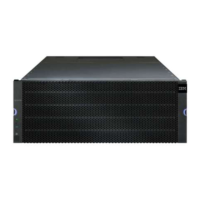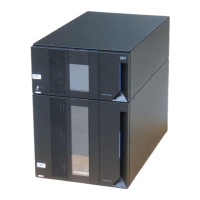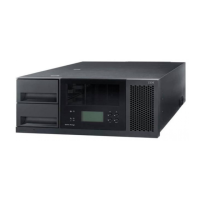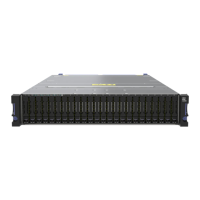The owner parameter defines which controller owns the logical drive. The preferred controller ownership
of a logical drive is the controller that currently owns the subsystem.
If you do not specify a capacity using the capacity parameter, all of the disk drive capacity that is
available in the subsystem is used. If you do not specify capacity units, bytes is used as the default
value.
Segment Size
The size of a segment determines how many data blocks that the controller writes on a single disk drive
in a logical drive before writing data on the next disk drive. Each data block stores 512 bytes of data. A
data block is the smallest unit of storage. The size of a segment determines how many data blocks that it
contains. For example, an 8-KB segment holds 16 data blocks. A 64-KB segment holds 128 data blocks.
When you enter a value for the segment size, the value is checked against the supported values that are
provided by the controller at run time. If the value that you entered is not valid, the controller returns a
list of valid values. Using a single disk drive for a single request leaves other disk drives available to
simultaneously service other requests.
If the logical drive is in an environment where a single user is transferring large units of data (such as
multimedia), performance is maximized when a single data transfer request is serviced with a single data
stripe. (A data stripe is the segment size that is multiplied by the number of disk drives in the subsystem
that are used for data transfers.) In this case, multiple disk drives are used for the same request, but each
disk drive is accessed only once.
For optimal performance in a multiuser database or file system storage environment, set your segment
size to minimize the number of disk drives that are required to satisfy a data transfer request.
Cache Read Prefetch
Cache read prefetch lets the controller copy additional data blocks into cache while the controller reads
and copies data blocks that are requested by the host from the disk drive into cache. This action increases
the chance that a future request for data can be fulfilled from cache. Cache read prefetch is important for
multimedia applications that use sequential data transfers. The configuration settings for the storage
subsystem that you use determine the number of additional data blocks that the controller reads into
cache. Valid values for the cacheReadPrefetch parameter are TRUE or FALSE.
You do not need to enter a value for the cacheReadPrefetch parameter or the segmentSize parameter. If
you do not enter a value, the controller firmware uses the usageHint parameter with fileSystem as the
default value. Entering a value for the usageHint parameter and a value for the cacheReadPrefetch
parameter or a value for the segmentSize parameter does not cause an error. The value that you enter for
the cacheReadPrefetch parameter or the segmentSize parameter takes priority over the value for the
usageHint parameter.
For enclosure loss protection to work, each disk drive in an subsystem must be on a separate enclosure. If
you set the enclosureLossProtect parameter to TRUE and have selected more than one disk drive from
any one enclosure, the storage subsystem returns an error. If you set the enclosureLossProtect parameter
to FALSE, the storage subsystem performs operations, but the subsystem that you create might not have
enclosure loss protection. enclosure loss protection is not valid when you create logical drives on existing
subsystems.
Enclosure Loss Protection and Drawer Loss Protection
For enclosure loss protection to work, each drive in an subsystem must be on a separate enclosure. If you
set the enclosureLossProtect parameter to TRUE and have selected more than one drive from any one
3-96 IBM System Storage DS3000, DS4000, and DS5000: Command Line Interface and Script Commands Programming Guide

